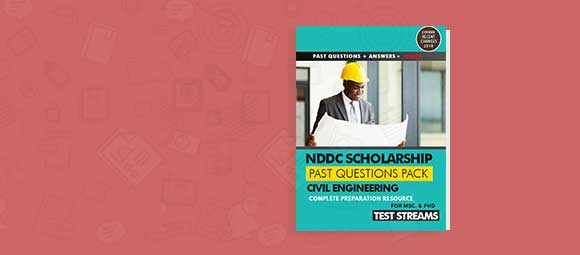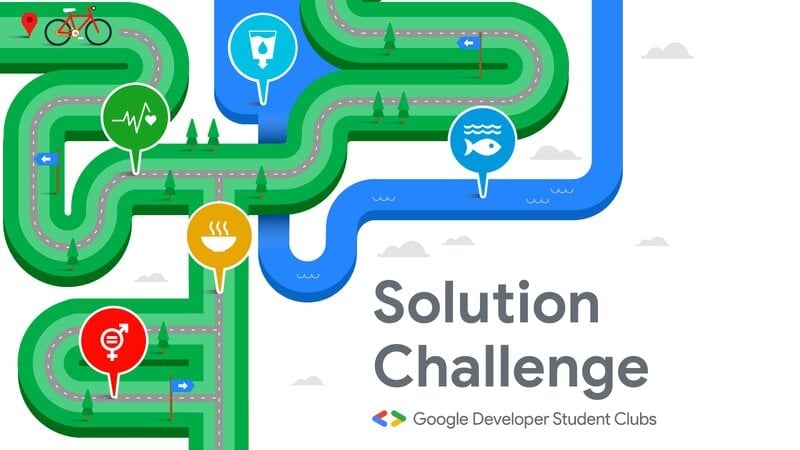Can you ace these NDDC Scholarship Civil Engineering Aptitude Test questions? Start honing your skills with some past questions practice and get a preview of what you can expect on test day.
We pulled these Civil Engineering questions from our study pack NDDC Scholarship aptitude-test past questions studypack. Each sample question includes correct answers, so you can see how to crack it!
Note about the test format: On the NDDC Scholarship aptitude test you’ll face 4 test sections: Mathematics, English language, General knowledge, and the Skill test section (Civil Engineering based questions).
Sample NDDC Scholarship Civil Engineering Aptitude Test Past Questions and answers
1. Stones are obtained from rocks that are made up of:
A. Ores
B. Minerals
C. Chemical compounds
D. Crystals
See the answer
The correct answer is B.
Explanation:
Rocks are made up of minerals. They can be monomineralic (single mineral) or polymineralic (more than one mineral).
2. Which process comes after batching in manufacture process?
A. Transportation
B. Placing
C. Mixing
D. Compacting
See the answer
The correct answer is C.
Explanation:
Batching involves measuring the amount of raw materials required for manufacture of concrete. The next step is to mix all these ingredients together.
3. The computer-aided design (CAD) hardware doesn’t include.
A. Graphic display terminals
B. Computer
C Computer Programmes
D. Keyboard
See the answer
The correct answer is C.
Explanation:
CAD has both hardware and software components. The hardware components are option A, B and D. The software components include all computer programmes that implement computer graphics
4. How many types of CAD are there?
A. 6
B. 4
C. 2
D. 5
See the answer
The correct answer is D.
Explanation:
The five types are 2D CAD (flat drawings of product), 2.5D CAD (Prismatic models), 3D CAD (3D objects), 3D wireframe and surface modelling (skeleton like inner structure) and solid modelling (solid geometry).
5. Modem CAD systems are based on:
A. ICG
B. GCI
C. GIF
D. IFG
See the answer
The correct answer is A.
Explanation:
ICG is interactive computer graphics. It denotes a user-oriented system in which computer is used to create, transform and display data in pictorial or symbolic forms.
Click here to get the complete NDDC Scholarship past questions pack for Civil Engineering category
6. How many groups are there in IS codes for Civil Engineering?
A. 41
B. 52
C. 62
D. 35
See the answer
The correct answer is A.
Explanation:
There are 41 groups or categories of IS codes available for Civil Engineering. Some of them include hardware, stone, ports and harbour, cement and concrete, fire safety, etc.
7. Which is the latest version of AutoCAD software?
A. 2016
B. 2017
C. 2018
D. 2019
See the answer
The correct answer is C.
Explanation:
AutoCAD 2018 is the latest version. It has improved save performance, improved 2D Graphics, 3D navigation performance, AutoCAD mobile app and updated DWG file format.
8. Which key is used to obtain properties palette in AutoCAD?
A. Control+1
B. Control+2
C. Control+3
D. Control+4
See the answer
The correct answer is A.
Explanation:
Control+2 gives design centre palette, control+3 gives tools palette. Control+4 is not an option.
9. Disaster management deals with situation that occur after disaster.
A. True
B. False
See the answer
The correct answer is B.
Explanation:
Disaster management is a broad term and it deals with situation prior to, during and after the occurrence of a disaster.
10. How many elements of disaster management are there?
A. 8
B. 7
C. 4
D. 6
See the answer
The correct answer is D.
Explanation:
There are six distinct sets of activities. These include risk management, loss management, control of events, equity of assistance, resource management and impact reduction.






![NDDC Scholarship Geology Past Questions And Answers [Free – Download] NDDC Scholarship Geology Past Questions And Answers [Free – Download]](https://teststreams.com/blog/wp-content/uploads/2023/07/geo-1.png)